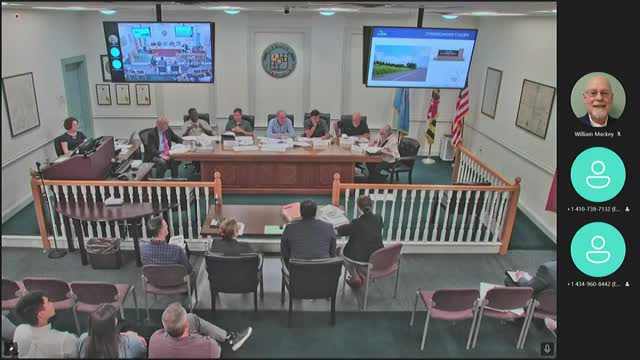Sheep grazing revolutionizes solar farm sustainability
October 04, 2024 | Kent County, Maryland
This article was created by AI summarizing key points discussed. AI makes mistakes, so for full details and context, please refer to the video of the full meeting. Please report any errors so we can fix them. Report an error »

In a recent government meeting, discussions centered around the potential benefits of agrivoltaics, a practice that combines agriculture and solar energy production. Daniel Daugherty, a representative from the American Solar Grazers Association, provided insights into how agrivoltaics can enhance soil health and offer economic opportunities for local farmers.
Daugherty, who has a long family history in farming, emphasized that agrivoltaics can improve soil conditions significantly after solar projects are implemented. He noted that utilizing sheep for grazing on solar sites not only maintains agricultural use of the land but also enhances soil biodiversity and captures carbon. He highlighted the balanced nature of sheep manure, which can be a valuable resource for soil health.
The meeting also addressed concerns regarding the long-term use of land designated for solar energy. Daugherty reassured attendees that once the solar infrastructure is removed, the land can be returned to agricultural use, unlike other forms of development that permanently alter the landscape. He advocated for the integration of solar energy with traditional farming practices, arguing that this approach allows for sustainable land use while providing farmers with additional income streams.
Daugherty shared his experiences with local solar projects in Pennsylvania and Virginia, where he collaborates with farmers to implement rotational grazing practices. This method not only benefits the sheep but also supports local ecosystems, including pollinator habitats. He mentioned that sheep would likely graze on solar sites for about nine months of the year, with plans to utilize local sheep to minimize transportation impacts.
The meeting concluded with a call for further collaboration between solar companies and agricultural stakeholders to maximize the benefits of agrivoltaics, ensuring that both energy production and farming can coexist sustainably.
Daugherty, who has a long family history in farming, emphasized that agrivoltaics can improve soil conditions significantly after solar projects are implemented. He noted that utilizing sheep for grazing on solar sites not only maintains agricultural use of the land but also enhances soil biodiversity and captures carbon. He highlighted the balanced nature of sheep manure, which can be a valuable resource for soil health.
The meeting also addressed concerns regarding the long-term use of land designated for solar energy. Daugherty reassured attendees that once the solar infrastructure is removed, the land can be returned to agricultural use, unlike other forms of development that permanently alter the landscape. He advocated for the integration of solar energy with traditional farming practices, arguing that this approach allows for sustainable land use while providing farmers with additional income streams.
Daugherty shared his experiences with local solar projects in Pennsylvania and Virginia, where he collaborates with farmers to implement rotational grazing practices. This method not only benefits the sheep but also supports local ecosystems, including pollinator habitats. He mentioned that sheep would likely graze on solar sites for about nine months of the year, with plans to utilize local sheep to minimize transportation impacts.
The meeting concluded with a call for further collaboration between solar companies and agricultural stakeholders to maximize the benefits of agrivoltaics, ensuring that both energy production and farming can coexist sustainably.
View full meeting
This article is based on a recent meeting—watch the full video and explore the complete transcript for deeper insights into the discussion.
View full meeting
